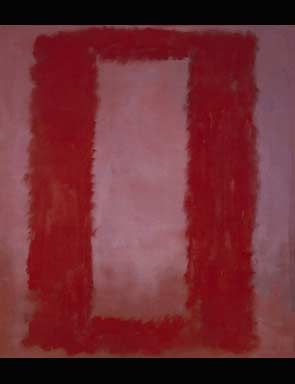Late Works of Mark Rothko @ Tate Modern
Mark Rothko, Untitled, Mural for End Wall 1959. National Gallery of Art, Washington, Gift of The Mark Rothko Foundation, Inc. 1985.38.5 © 1998 by Kate Rothko Prizel and Christopher Rothko. 265.4 x 288.3
LONDON.- The first major exhibition dedicated to the late works of Mark Rothko (1903-1970), one of America’s most important and iconic post-war painters, will open at Tate Modern next autumn. Focusing on the final part of his career between 1958 and 1970, the exhibition will comprise around 50 works, including paintings and works on paper.
Bringing together an exceptional group of 16 Seagram murals, the exhibition will offer an unprecedented opportunity to experience this seminal body of work. For the first time in their history the nine Tate Seagram murals (known as the ‘Rothko room’) will be joined by a selection of related Seagram paintings from the collections of the Kawamura Memorial Museum of Art, Japan, and the National Gallery of Art, Washington. It will be the first time the Kawamura Memorial Museum of Art will have lent their works to an international exhibition since they joined its collection in the late 1980s.
The Seagram murals will be shown alongside other landmark series of Rothko’s paintings, including major Black-Form paintings (1964), large-scale Brown on Grey works on paper (1969), and works from his last series Black on Grey, made in 1969–70.
Commissioned in 1958 the Seagram murals were intended to adorn the exclusive Four Seasons restaurant in Manhattan’s newly built Seagram building, designed by Mies van der Rohe and Philip Johnson. Rothko constructed a scaffold in his studio to create a replica space of the restaurant to work in. Though the original commission was meant to encompass only seven paintings, Rothko eventually painted 30 canvases.
The bright and intense colours of his earlier paintings made way to maroon, dark red and black, and Rothko soon realised that the brooding character of his latest creations required a very different environment to the one they had been commissioned for. Rothko saw the Seagram paintings as objects of contemplation, demanding the viewer’s complete absorption. He made reference to Michelangelo’s works in the Laurentian Library in Florence, with its deliberately oppressive atmosphere, commenting that Michelangelo ‘achieved just the kind of feeling I’m after - he makes the viewers feel that they are trapped in a room where all the doors and windows are bricked up’. He took the decision to withdraw from the restaurant commission.
Shortly before his death in 1970, Rothko presented nine Seagram paintings to the Tate Gallery, citing his deep affection for the Collection, especially for JMW Turner. Displayed in keeping with the artist’s wishes as one coherent environment, the subtlety of the layered surfaces slowly emerges, revealing their solemn and meditative character.
Mark Rothko is curated by Achim Borchardt-Hume, Curator, Modern and Contemporary Art, Tate Modern. The exhibition is organised by Tate Modern in association with Kawamura Memorial Museum of Art and will travel to Japan in spring 2009.
Mark Rothko, Red on Maroon 1959, Tate © 1998 by Kate Rothko Prizel and Christopher Rothko. 266.7 x 238

/https%3A%2F%2Fprofilepics.canalblog.com%2Fprofilepics%2F1%2F0%2F100183.jpg)
/https%3A%2F%2Fstorage.canalblog.com%2F03%2F02%2F119589%2F96711876_o.jpg)
/https%3A%2F%2Fstorage.canalblog.com%2F11%2F31%2F119589%2F94773502_o.jpg)
/https%3A%2F%2Fstorage.canalblog.com%2F20%2F83%2F119589%2F94772815_o.jpg)
/https%3A%2F%2Fstorage.canalblog.com%2F26%2F72%2F119589%2F75604929_o.jpg)
/https%3A%2F%2Fstorage.canalblog.com%2F59%2F60%2F119589%2F26458628_o.jpg)




/http%3A%2F%2Fstorage.canalblog.com%2F77%2F91%2F119589%2F129002761_o.jpg)
/http%3A%2F%2Fstorage.canalblog.com%2F05%2F93%2F119589%2F128701538_o.jpg)
/http%3A%2F%2Fstorage.canalblog.com%2F43%2F03%2F119589%2F120591332_o.jpg)
/http%3A%2F%2Fstorage.canalblog.com%2F98%2F10%2F119589%2F120397015_o.jpg)